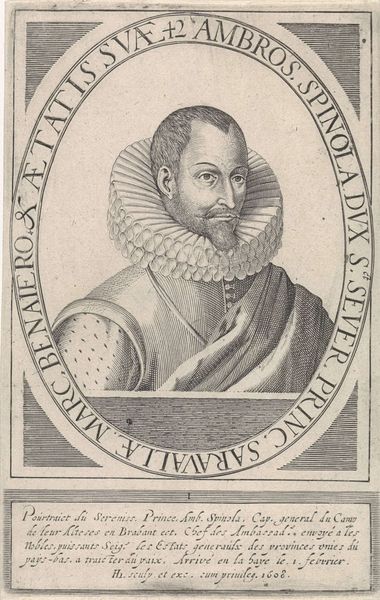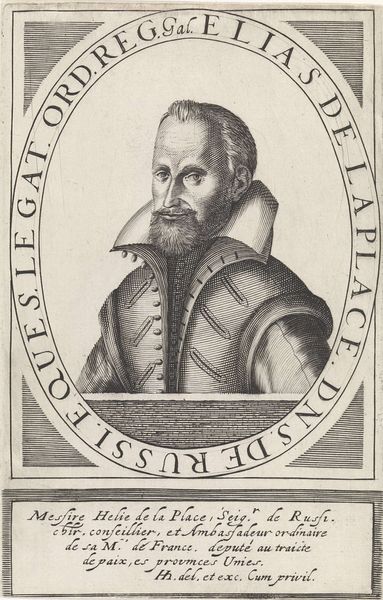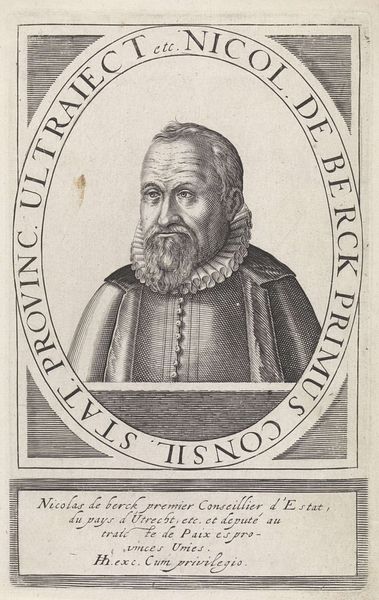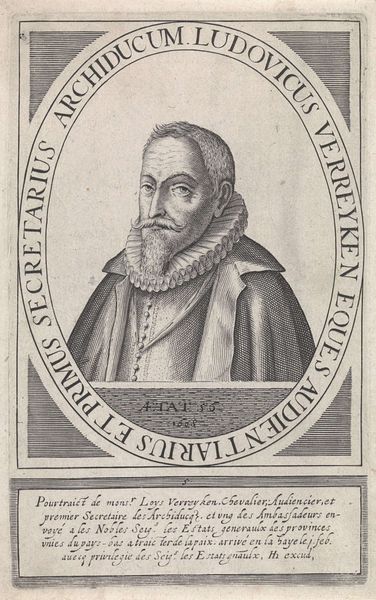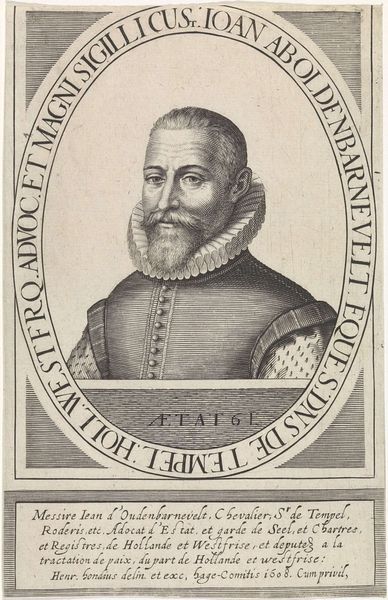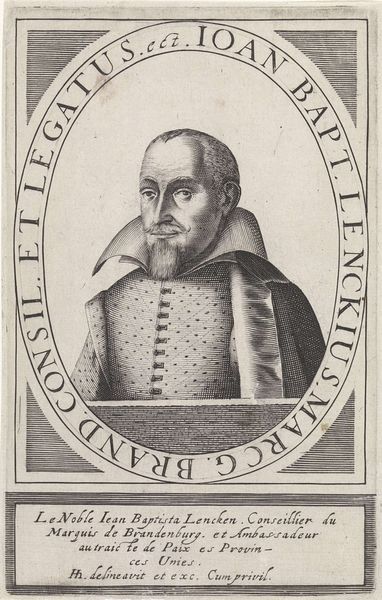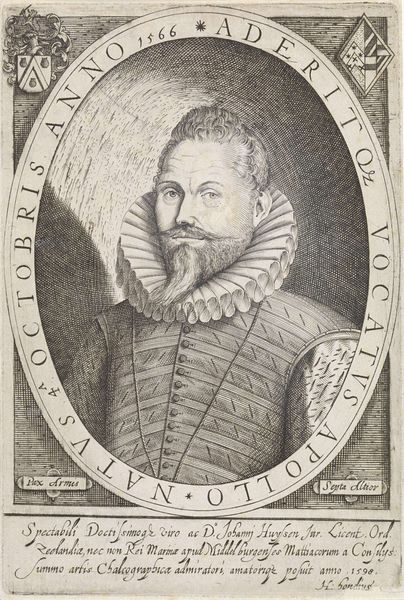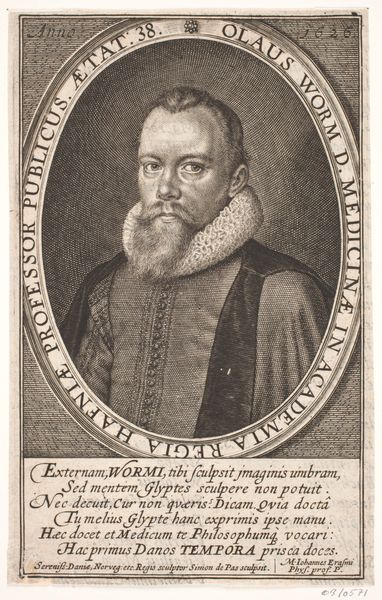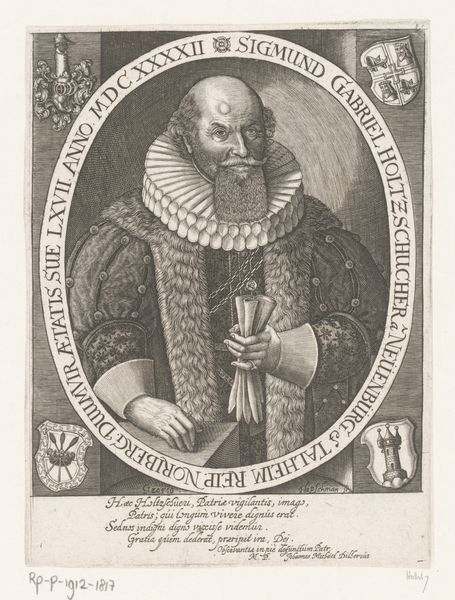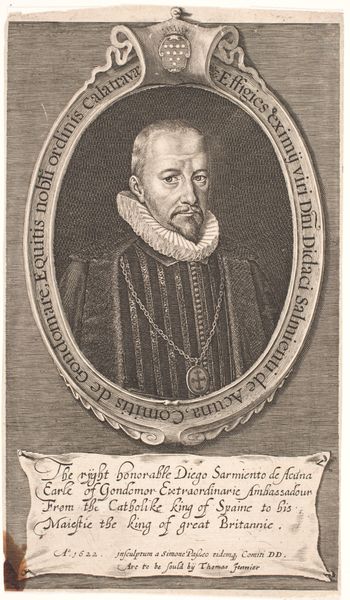
drawing, print, engraving
#
portrait
#
drawing
#
baroque
# print
#
northern-renaissance
#
engraving
Dimensions: height 194 mm, width 123 mm
Copyright: Rijks Museum: Open Domain
Editor: So, here we have Hendrick Hondius I’s 1608 engraving, "Portret van Juan de Mancicidor," currently housed in the Rijksmuseum. What strikes me is the sheer detail – the texture of the ruff, the lines in his face. It's a very direct, almost confrontational image. What do you see in it? Curator: I see a carefully constructed image meant to project power and status in a very specific historical moment. Consider the context: Hondius was operating within a complex network of patronage. These prints, beyond being artistic creations, served as propaganda, shaping the public image of important political figures like Mancicidor, who was deeply involved in the politics surrounding the Eighty Years' War. What kind of statements are being made here, do you think? Editor: Well, you can see the inscribed text frames him with grand titles - 'Secretary' and 'Councilor' to the King. It's interesting how the print isn't just an image but a kind of carefully packaged piece of information designed to impress. So the purpose transcends a simple likeness? Curator: Precisely. It's about legitimizing authority, asserting Spain's influence. These portraits circulated amongst the elite, solidifying networks and reinforcing hierarchies. It's crucial to consider not just what we see, but *where* these images were seen, who commissioned them, and the specific socio-political aims they served. These images worked as crucial cogs in the great game. Editor: I had been so focused on just the portrait itself, but you've completely reshaped how I think about it – from individual artwork to a tool within broader political strategies. Thank you for sharing this view. Curator: My pleasure! Art is never created in a vacuum. Understanding its historical and political context illuminates its true purpose.
Comments
No comments
Be the first to comment and join the conversation on the ultimate creative platform.
